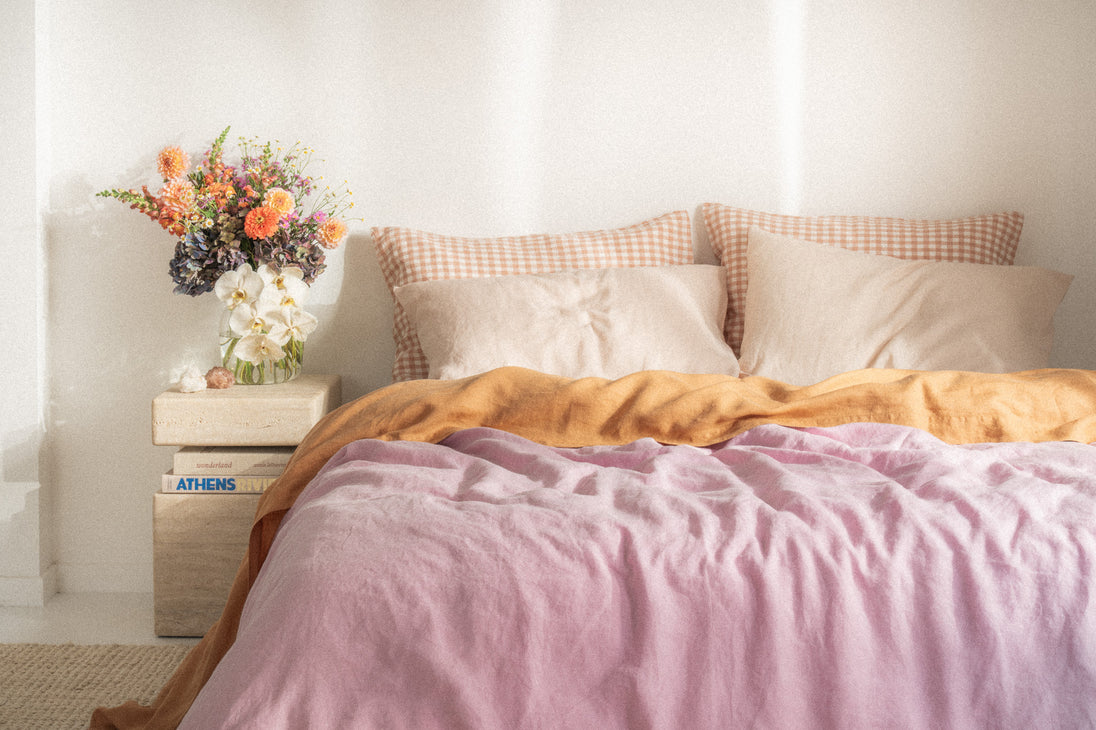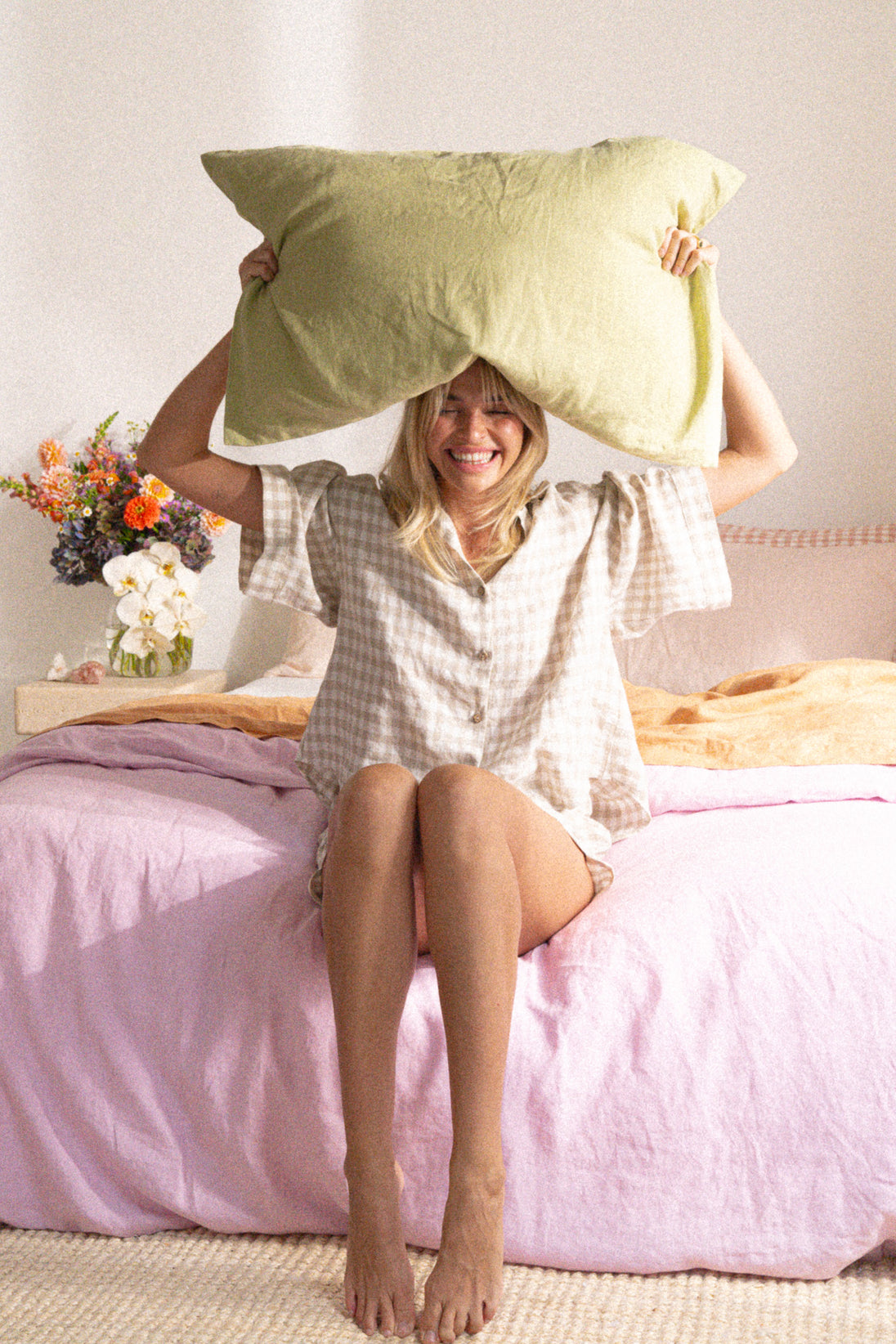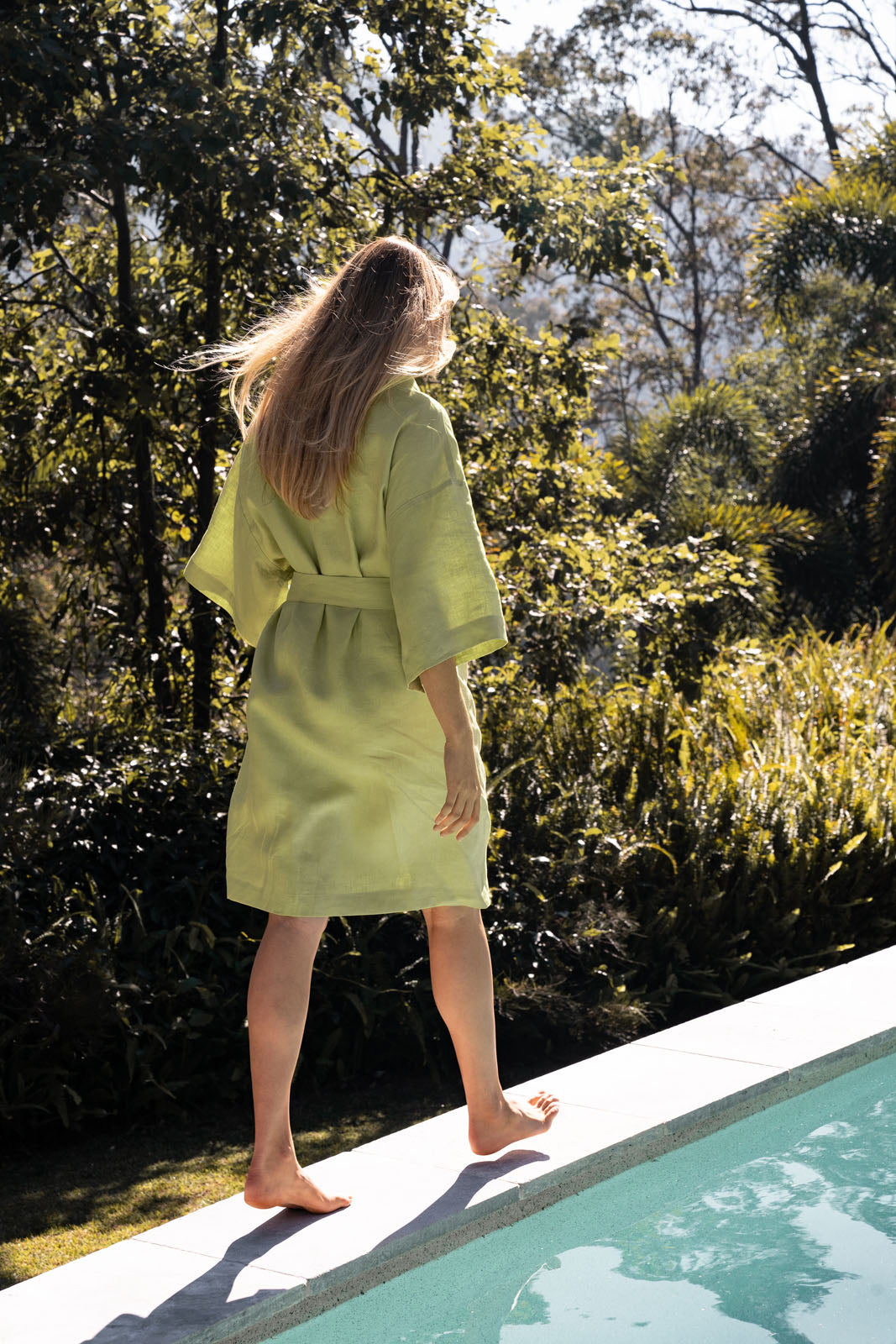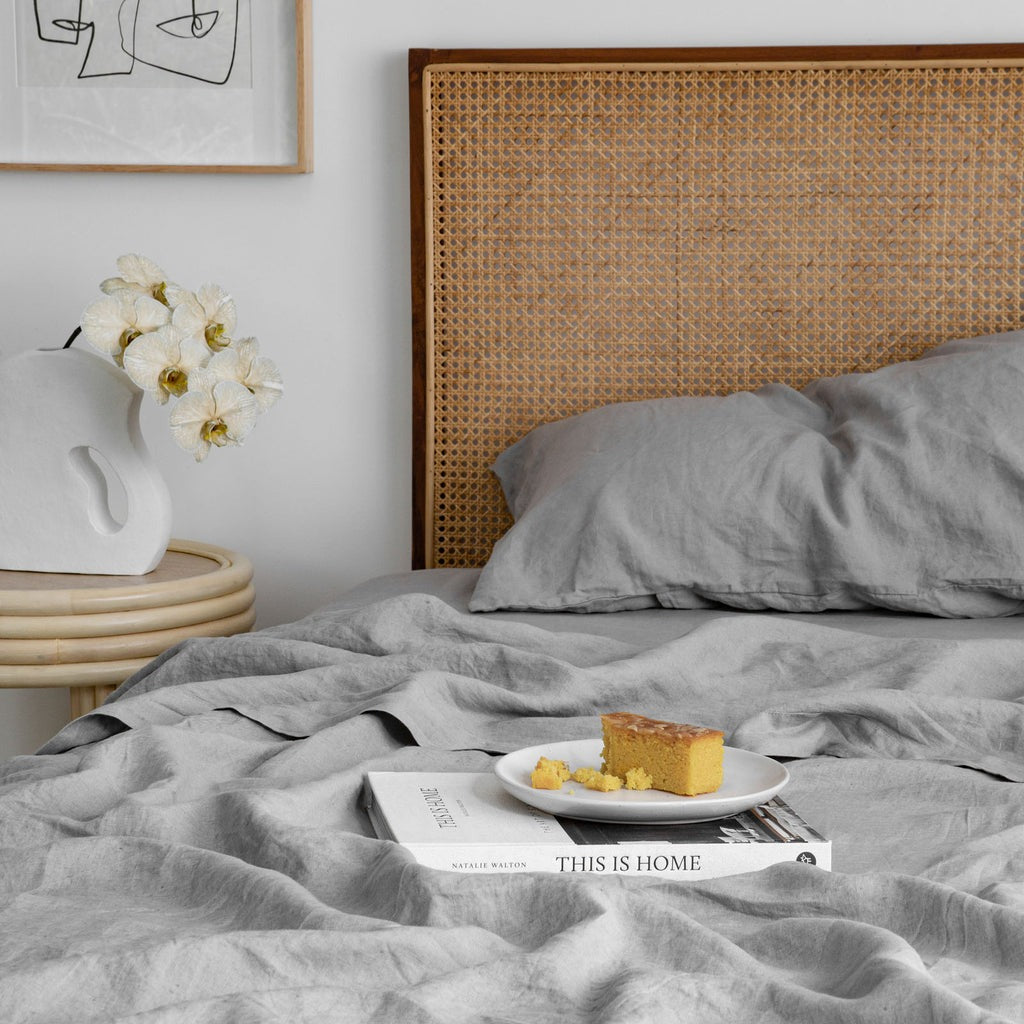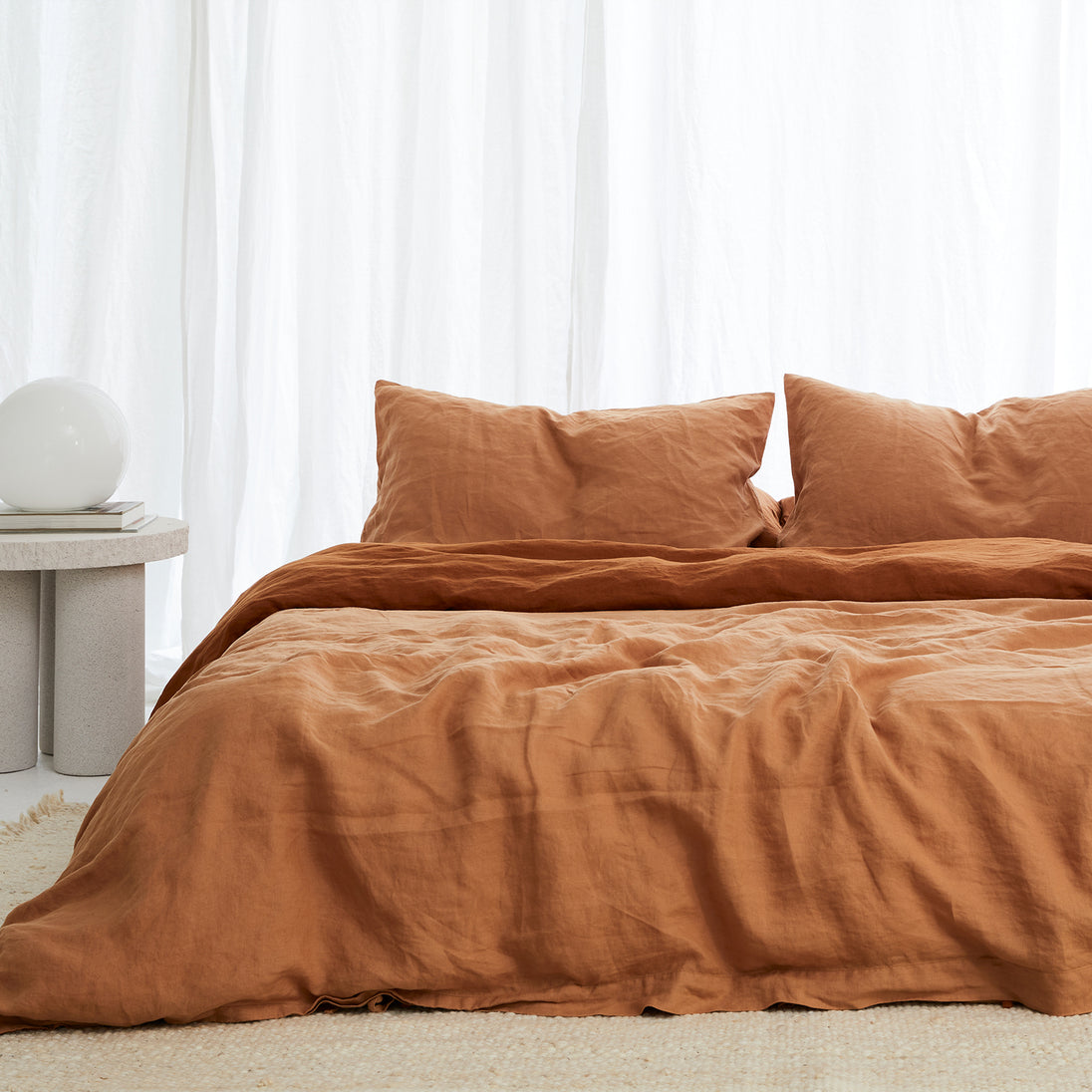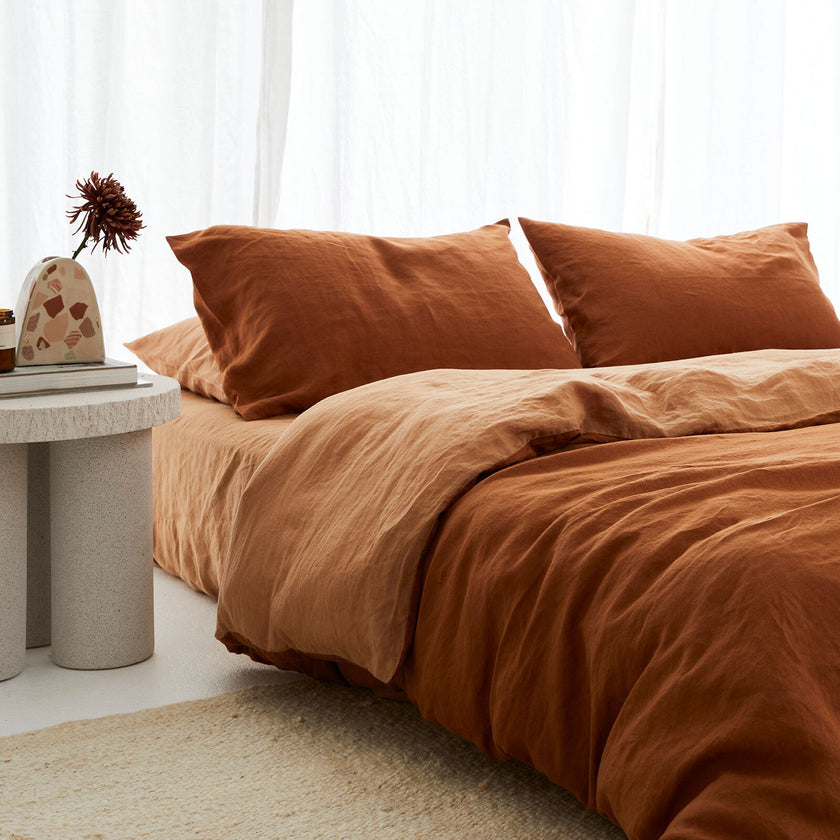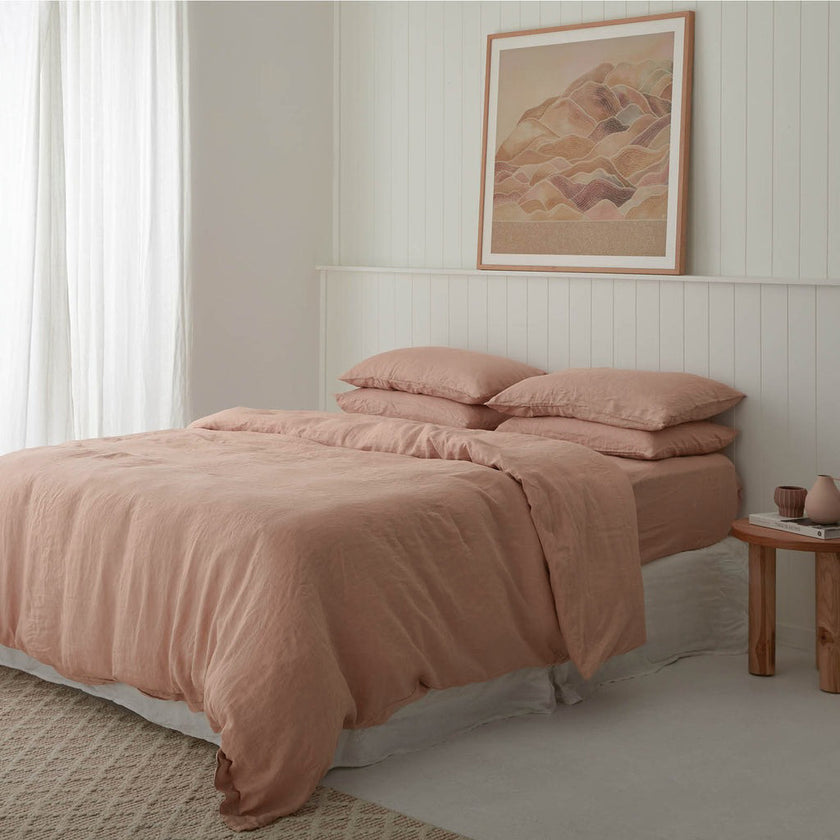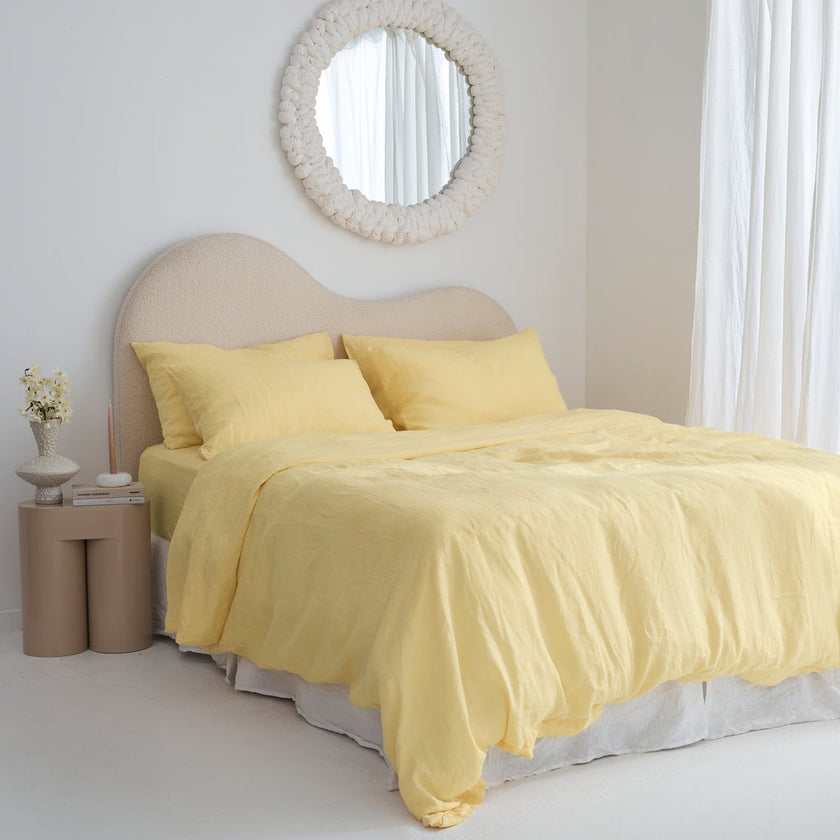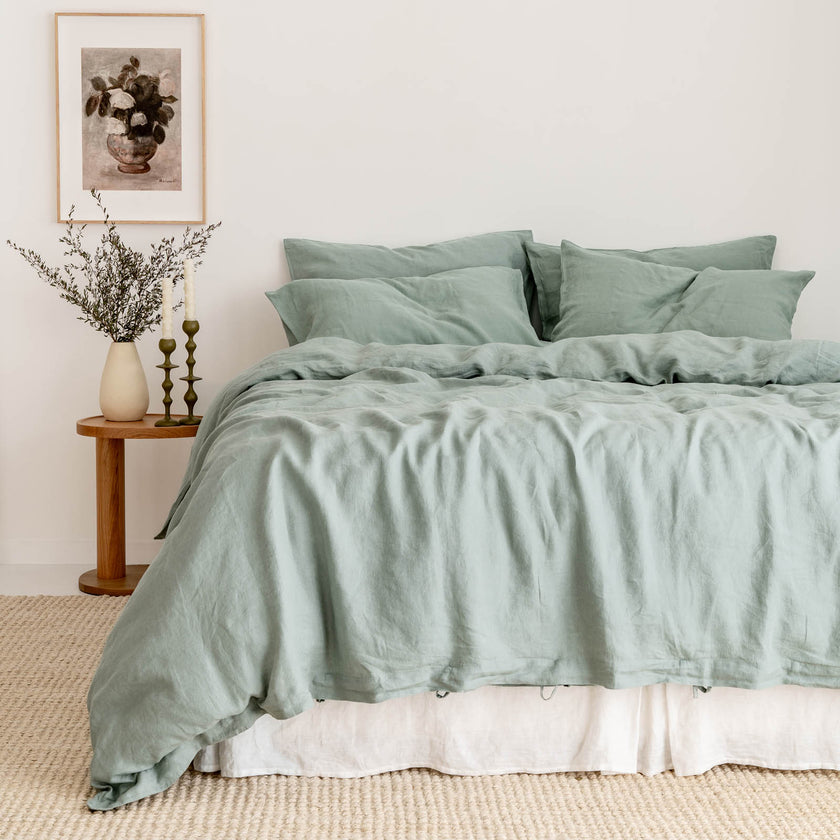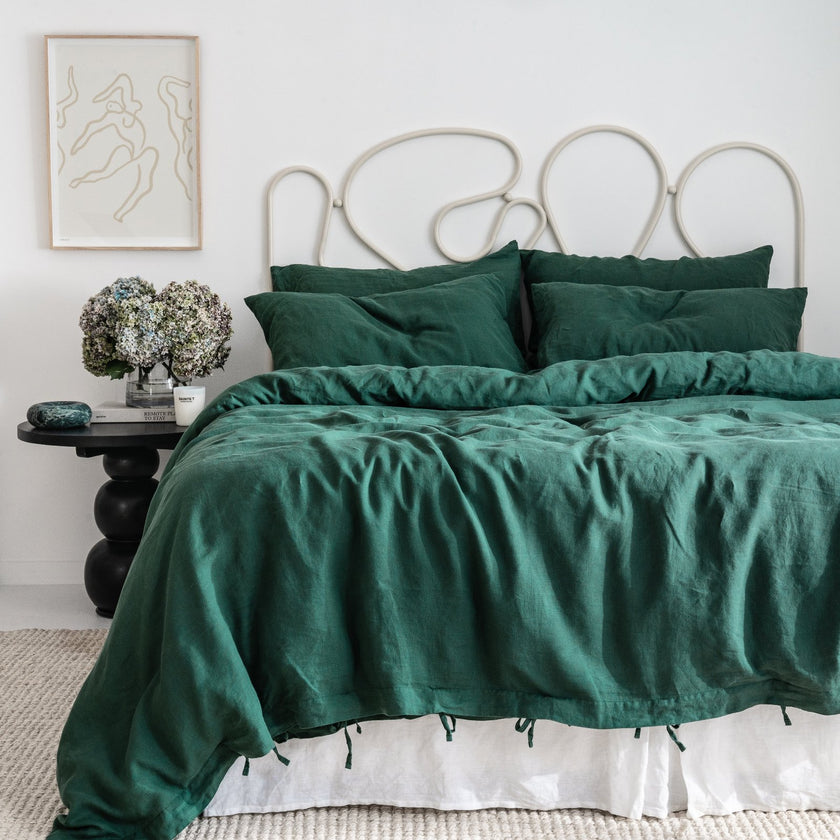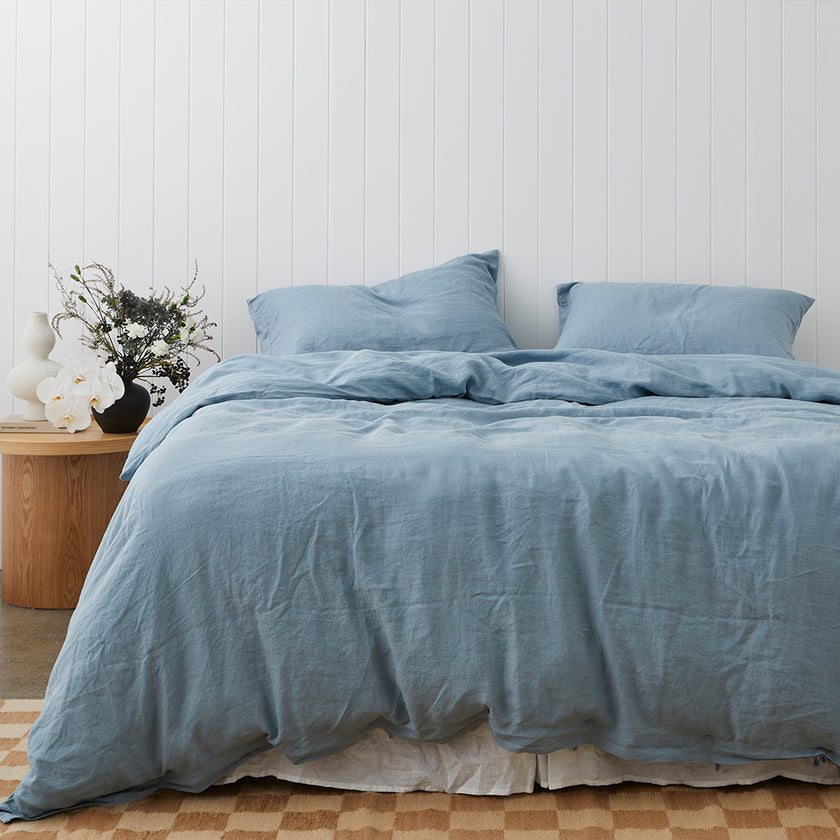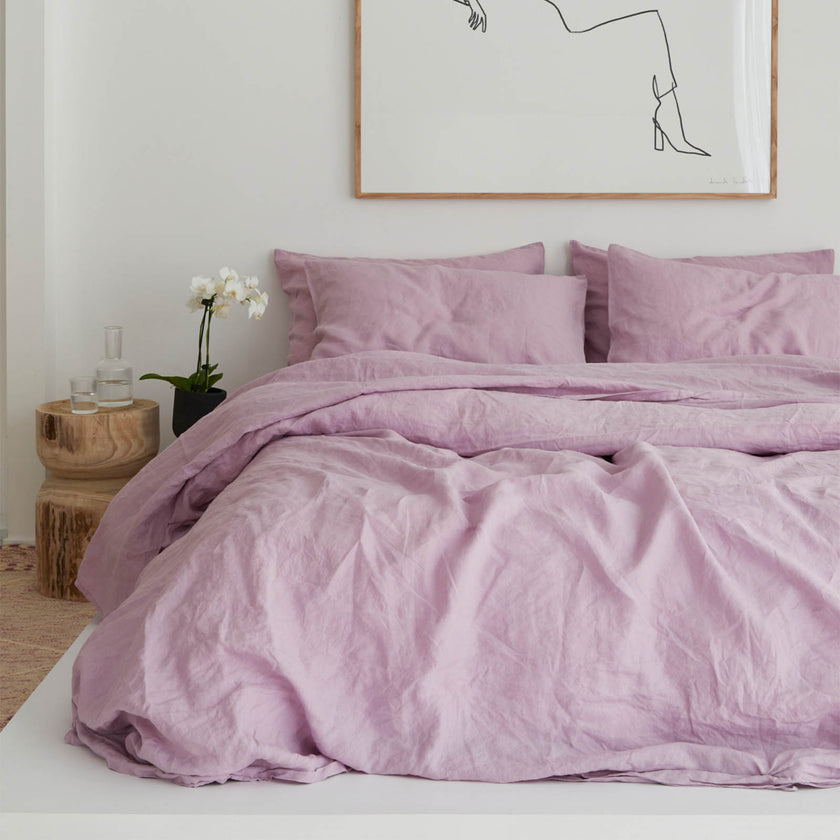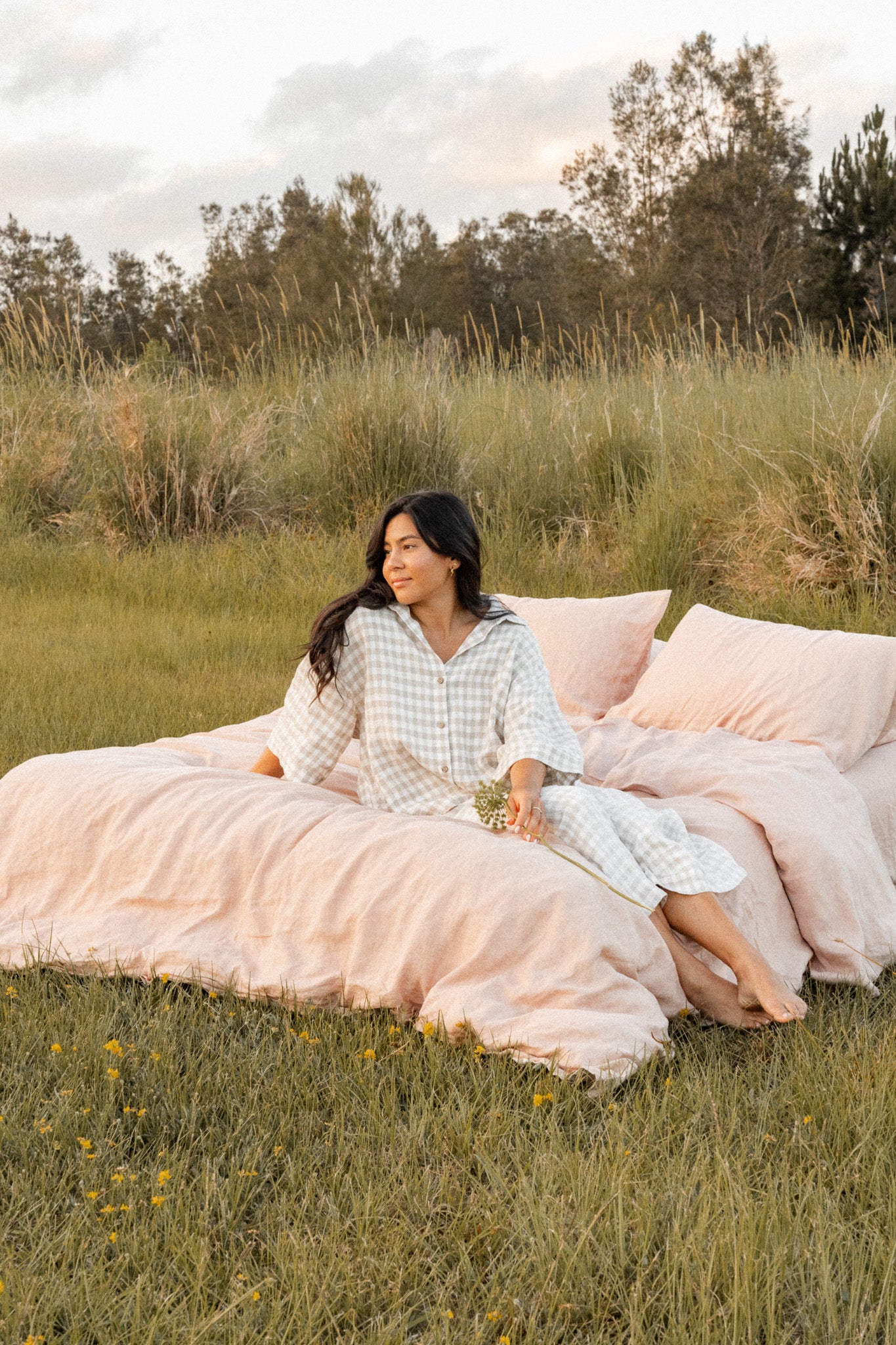
Best Colours to Boost Your Mood
Posted: 31 July 2023
Let’s discuss exactly how colour affects your mood, what colours make you happy, what colours calm depression, and so much more. So join us on this visual journey through the vivid spectrum of colour and learn how to benefit from incorporating different hues into your life.
It’s difficult to fully emphasise the impact of colour on our world, life and moods. Colour helps us to differentiate our surroundings visually, brings to life the most beautiful views in nature, like the ocean, sunsets and luscious gardens, and paints beauty into our everyday lives.
Recently there has been an upwards trend in mood-dressing or dopamine dressing to celebrate the simple joys of getting dressed, and this social media sensation isn’t groundless; colours affect our mood. And using colours not just on your body but in your bedroom with our signature French Linen Bedding is key to managing your mood. So let’s delve into the fascinating world of colour psychology and discover how colour can ignite feelings of joy, instil a sense of calm, promote relaxation and even fuel our energy levels.
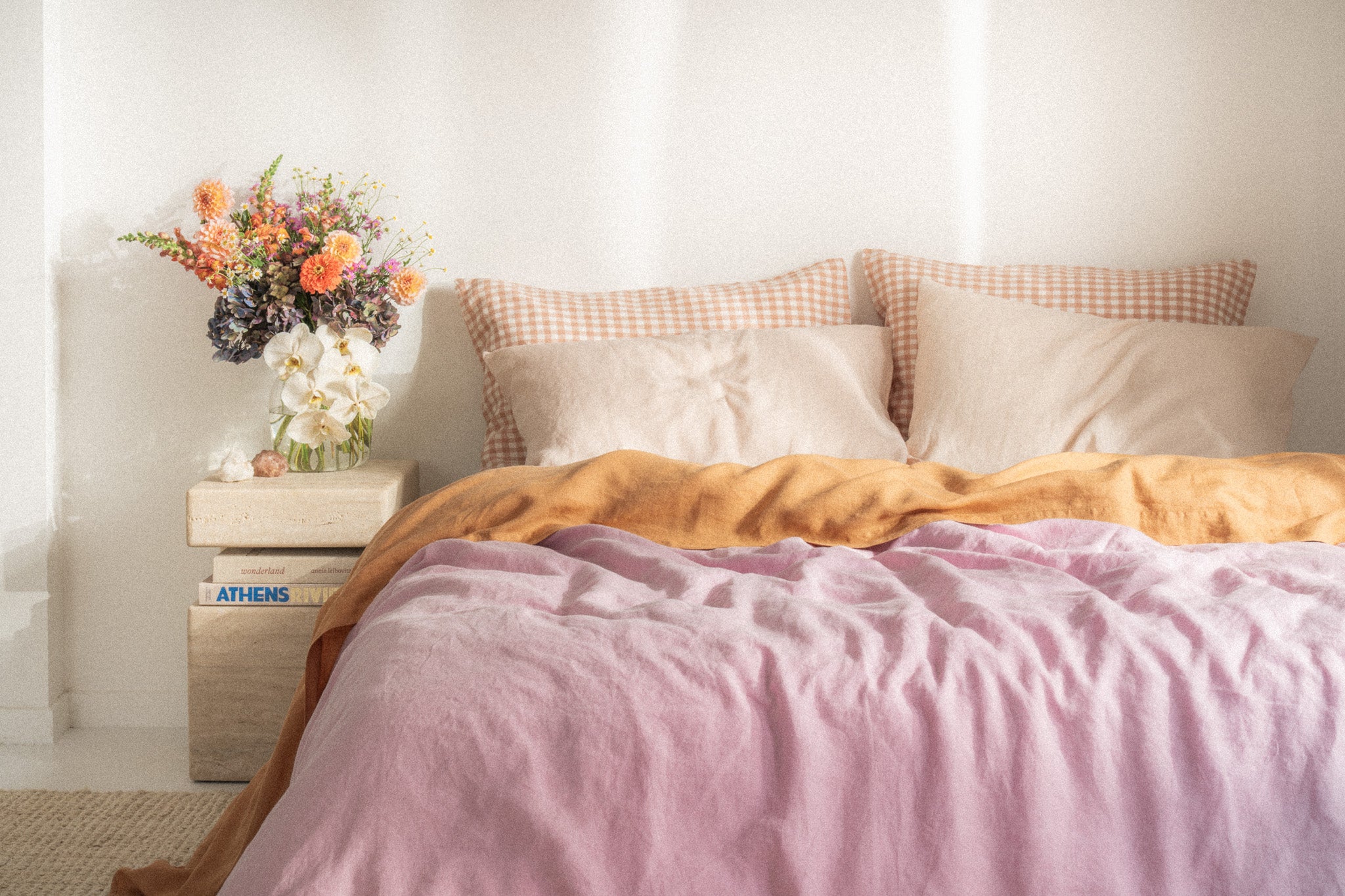
How can colour affect your mood?
Colour psychology refers to a field of study that takes the time to analyse how our brains perceive what our eyes see and how these visuals can influence our moods, thoughts and behaviours. Put simply; it is the study of how colour affects mood.
Intuitively, we often speak of the connection between colours and moods, from calming blues to invigorating greens to energising reds. But, the impact of colour on our moods isn't an old wives' tale. Instead, every colour we see evokes an emotional response. Research into "how does colour affect mood" has opened up new avenues in understanding human behaviour and emotional well-being, and taking the time to understand colour psychology can profoundly impact our daily lives.
Colour is woven into so many areas of our lives; for example, many of the world’s most recognisable brands use colour to shape consumer perceptions through advertising and brand logos; these colours have been meticulously chosen to evoke specific emotional responses in customers. This highlights how colour affects mood emotion and culture. Aside from corporate ventures, let’s also think about how colour affects mood in art. Often artists carefully select colour palettes to express feelings in the viewers.
It doesn't end there — the implications of colour psychology also extend to our home environments. The colours we incorporate into our home decor can significantly impact the space's mood. Science is beginning to catch up on the genuine effects of colour on mood. A study by the University of Sussex showed that participants exposed to red light showed much higher stress responses than those exposed to blue or white light. While more research is needed, this study and others are starting to answer the question of "How does colour affect mood?" with growing evidence.
Stick with us as we delve into the influence of specific colours on our moods and emotions.

What colours make you happy?
One of the most common questions when it comes to colour psychology is the classic; what colours make you happy? We are all chasing happiness and balance in our busy lives, and with the grocery list of products constantly marketed to us for ‘happiness’, it’s a surprising and welcomed change to consider simple hues can possess the power to spark joy and happiness.
This likely won’t surprise anyone — yellow is a colour that exudes positivity and optimism. Taking style cues from the sun, this colour evokes cheer whenever it is near. Shop by Yellow.
Green is another shade that promotes happiness; this shade invites vitality, contentment and reassurance into your space, taking inspiration from the simple beauty of nature and representing growth. Green is a welcomed, joyful addition to any room. Shop by Green.
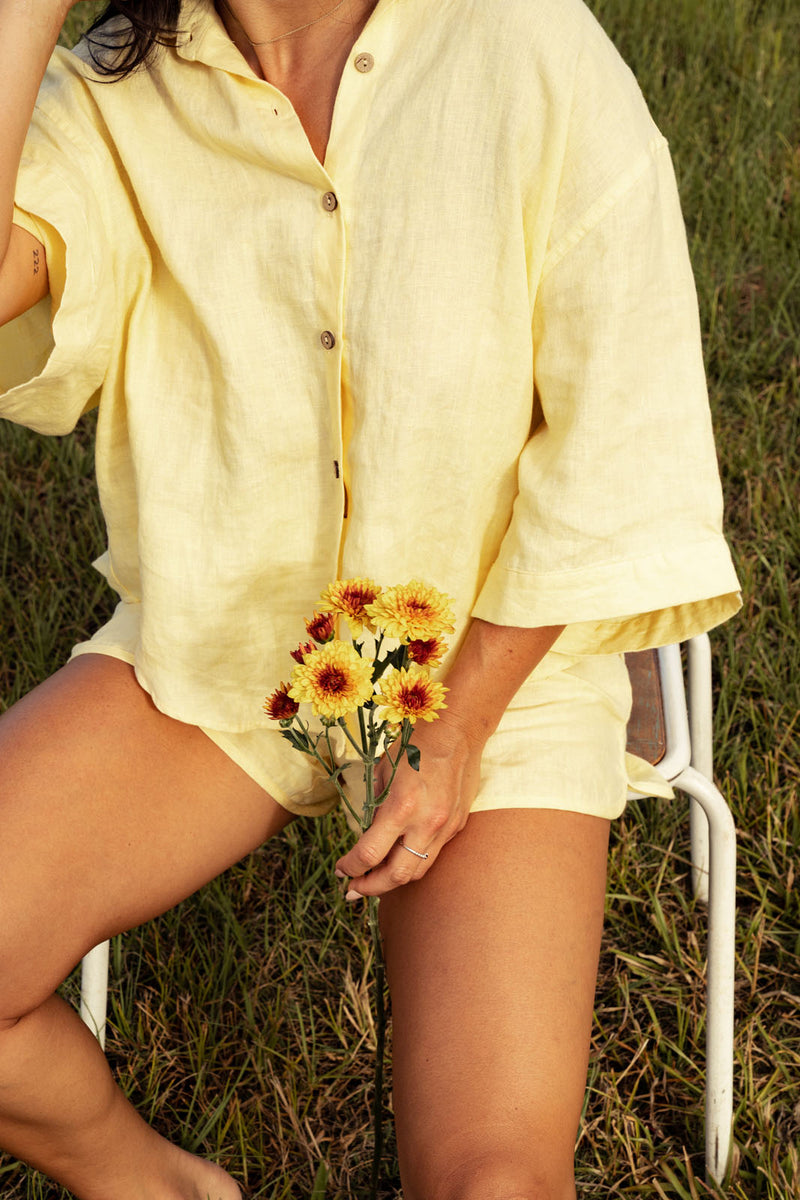
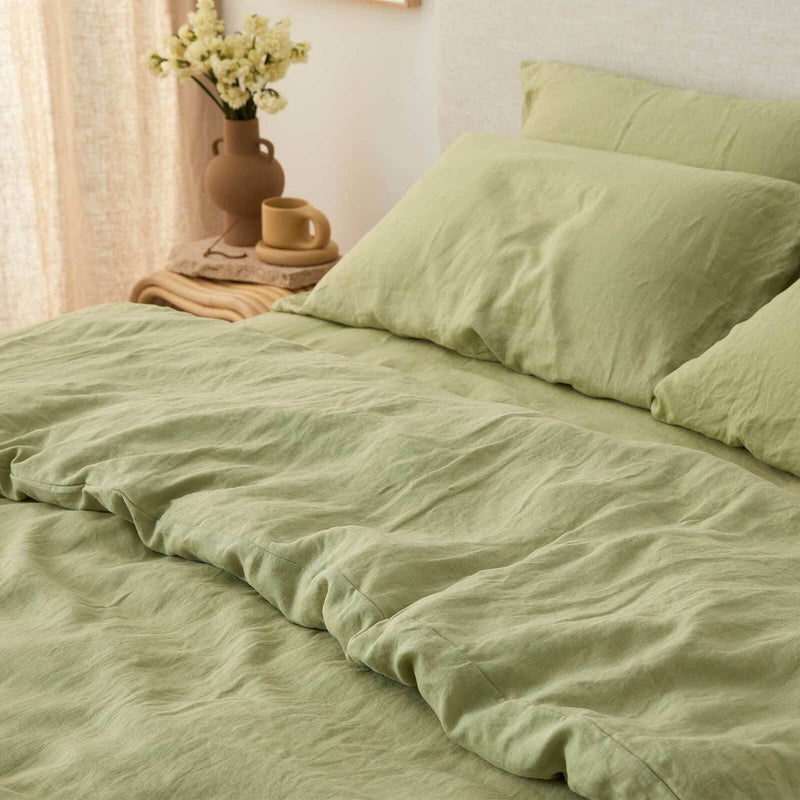
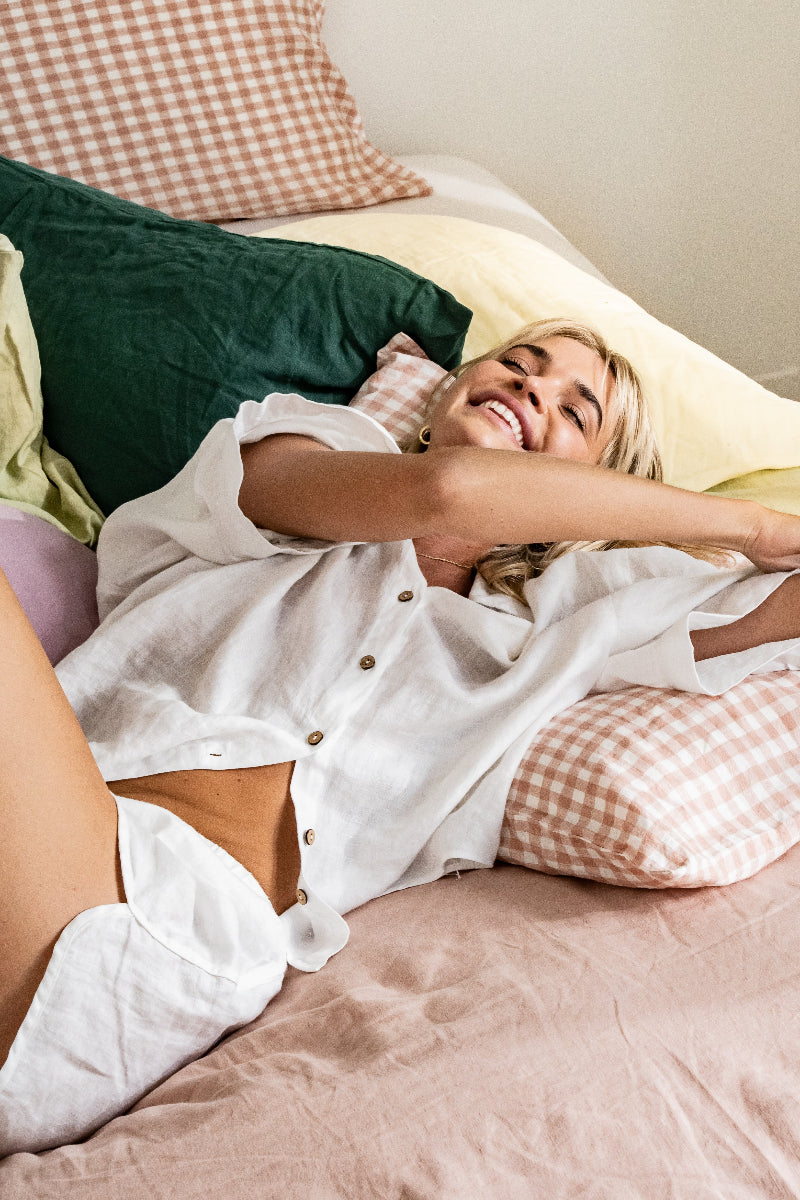
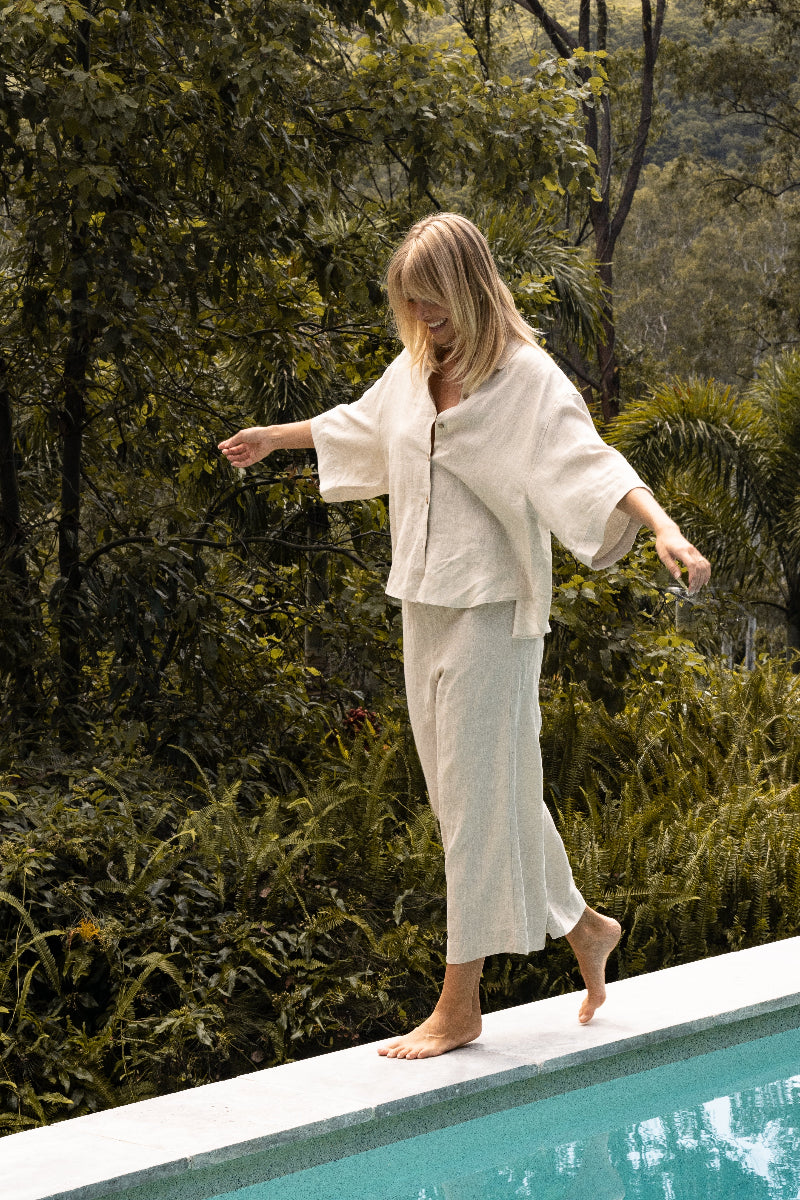
Invite relaxation in: What’s the most relaxing colour?
With the hustle and bustle of everyday life, it’s no wonder that one of the top questions surrounding colour psychology is; what’s the most relaxing colour? Relaxation is such an essential and often neglected practice in our modern world. The best place to start implementing relaxation is in our homes, our safe spaces tucked away from the rest of the world. Usually, the colours associated with a sense of relaxation are plucked from natural surroundings, successfully mimicking the tranquillity we experience in nature — however, a few shades may surprise you when it comes to answering what’s the most relaxing colour?
Blue is a hero colour in this article; the shade that makes up the sky and the sea is naturally going to top the lists for many categories, including being one of the most relaxing colours. Blue exudes a calming effect that can actually help to reduce feelings of anxiety. Blue, notably lighter blues, help to create a sense of spaciousness and serenity, providing you with an escape from the stress of daily life. However, it isn’t only light blue that gives relaxation; from soft pastels to deep navy shades, the full spectrum of blue offers a range of mood impacts, all of which fall in the category of soothing and peaceful. Shop by Blue.
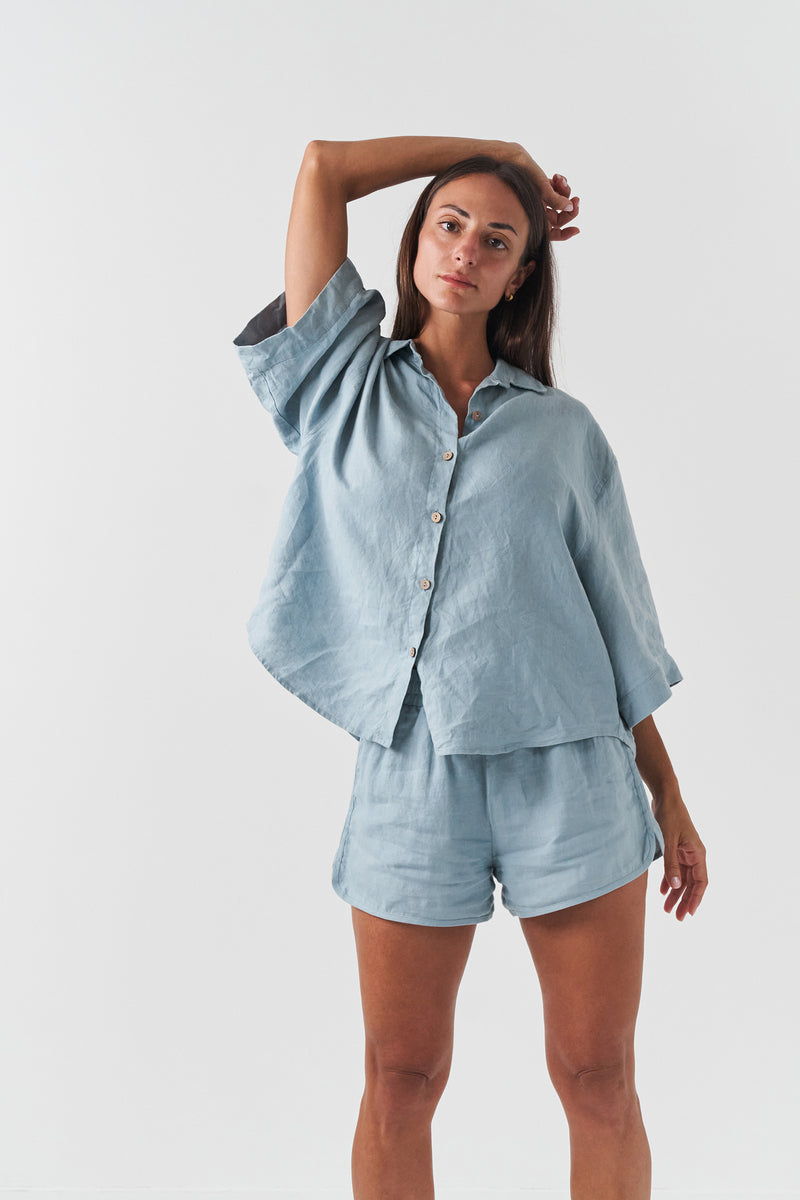
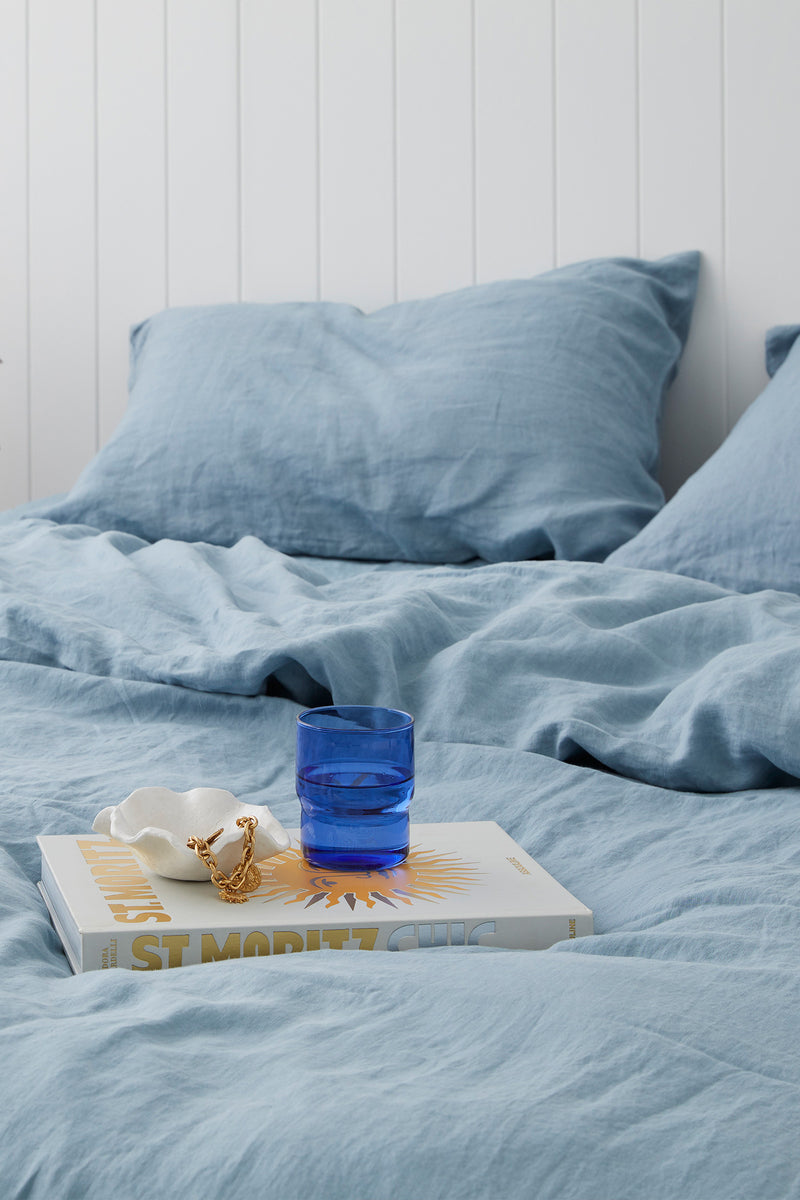
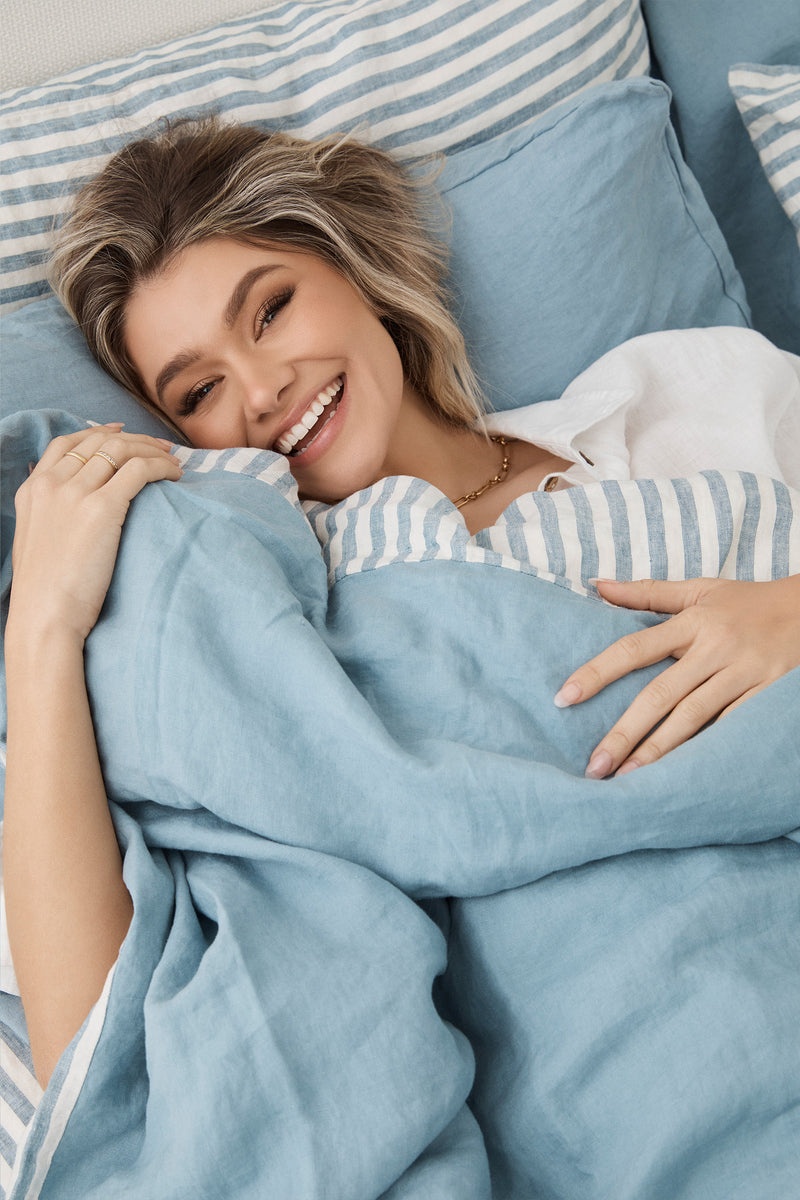
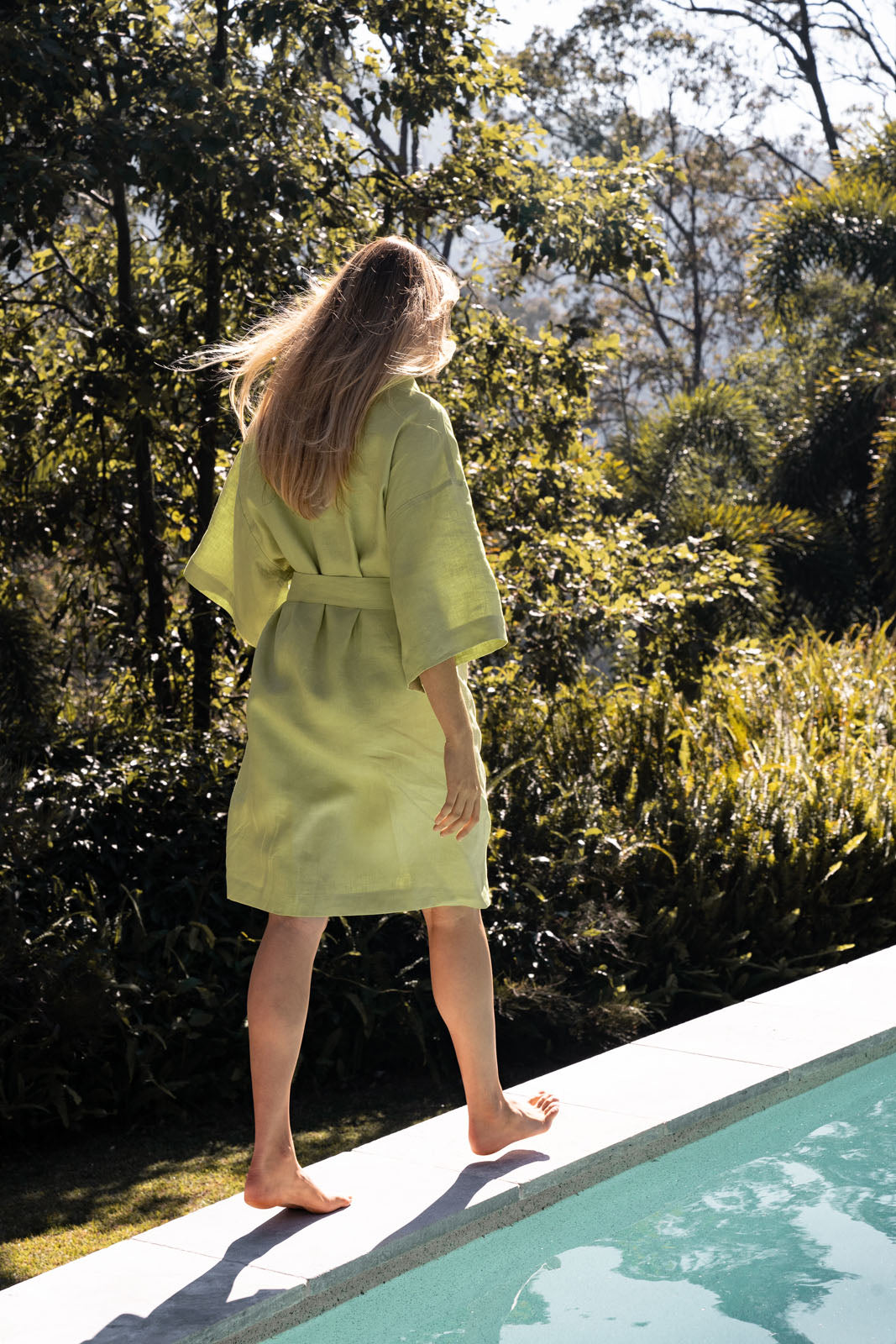
Green is another colour that takes the crown when it comes to colour psychology, representing associations with lush forests and abundant growth; green creates a feeling of renewal and harmony. Adding green to your space can help you to create your own little private sanctuary that promotes restfulness and balance, tucked away from the rest of the world. On the darker side of the scale, deep emerald greens embody a feeling of luxury and richness, while more pale mint greens are linked to tranquillity and calm. Shop by Green.
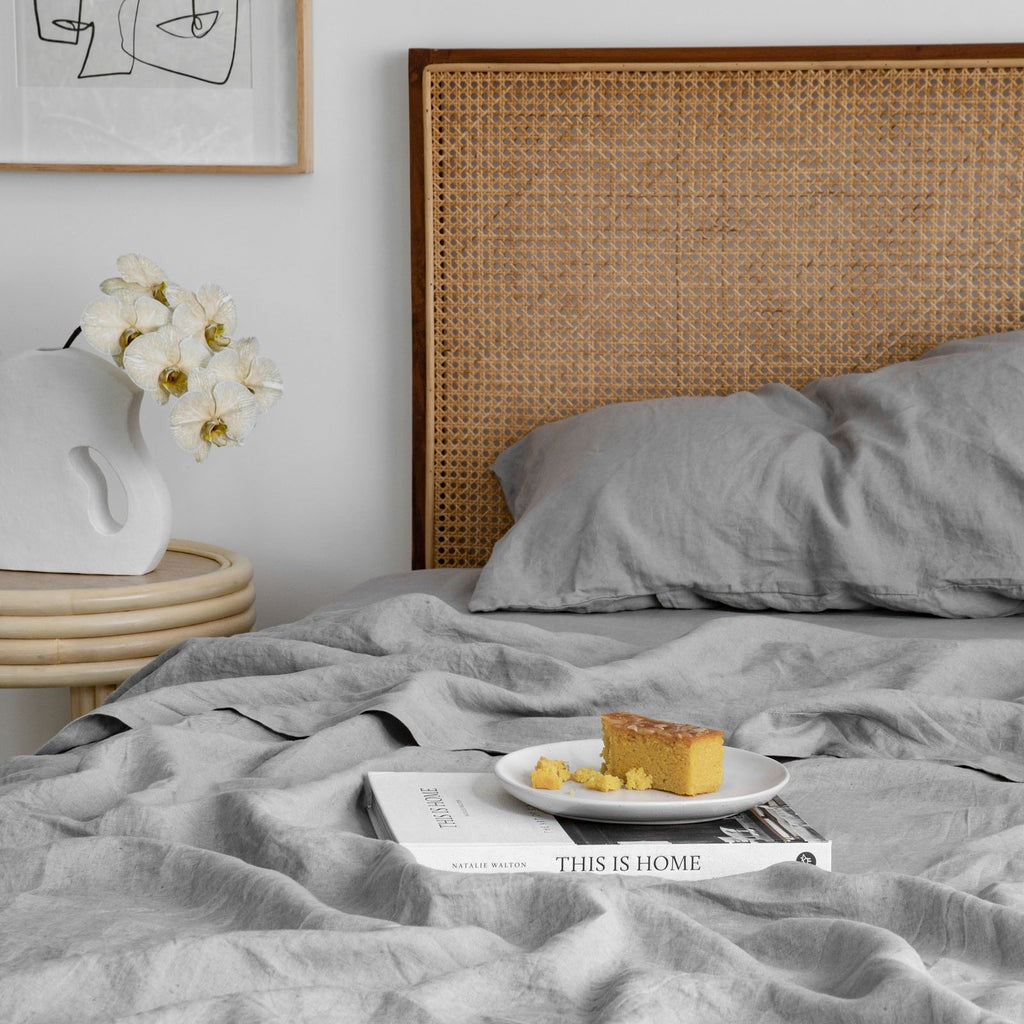
Grey is a shade that isn’t usually associated with the beauty of nature, but despite this, it has been proven to well and truly belong in the category of calming and balancing hues. Grey provides a neutral backdrop allowing other colours to take up space, so it’s ideal for adding interiors to your home. It’s also a versatile shade that can help to create sophisticated, classic and calm spaces. Soft greys, in particular, can help create relaxing and peaceful home environments. Shop by Grey.
Energising Hues: What colour gives you energy?
Okay, so we have explored all of the calming shades, but the power of colour to energise and invigorate is just as potent as the ability to relax. So, what colour gives you energy?
Red or rusty shades are associated with fire, passion, power, energy, excitement and action. This intense, bold hue can quickly stimulate the senses and invite energy into your space. Red can also ignite passion and motivation, which is ideal for the bedroom and home office. Shop Earthy Tones.
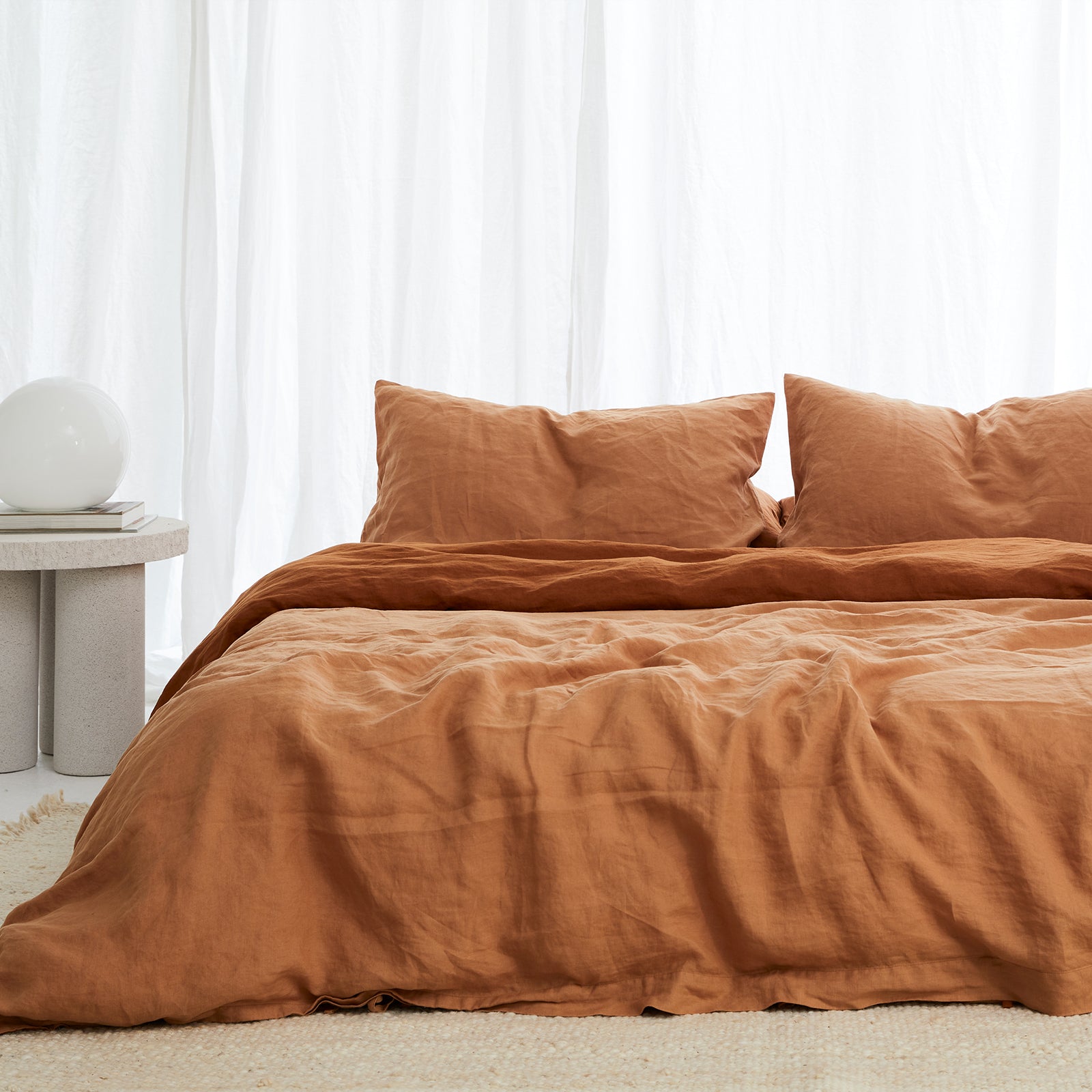
Orange is a colour that effortlessly blends the passion and energy of red and the happiness and cheer of yellow. Orange radiates warmth and enthusiasm and is often associated with feelings of creativity, determination, and encouragement. Taking cues from nature's hues of autumn leaves or the morning sunrise, orange is the perfect shade to invite into your space to feel energised and invigorated. We find our signature and exclusive shade Sandalwood evokes these tones in your home.
Yellow, the colour of the moment, arrives again. The shade of sunshine is uplifting, illuminating and often brings feelings of joy, freshness and positivity. Yellow is also great for stimulating mental activity and fostering creativity and productivity, making it ideal for spaces like the kitchen or home office. While lighter, more buttery yellows can bring a room to life with a soft vitality, bolder and brighter yellows can help to spark energy and excitement.
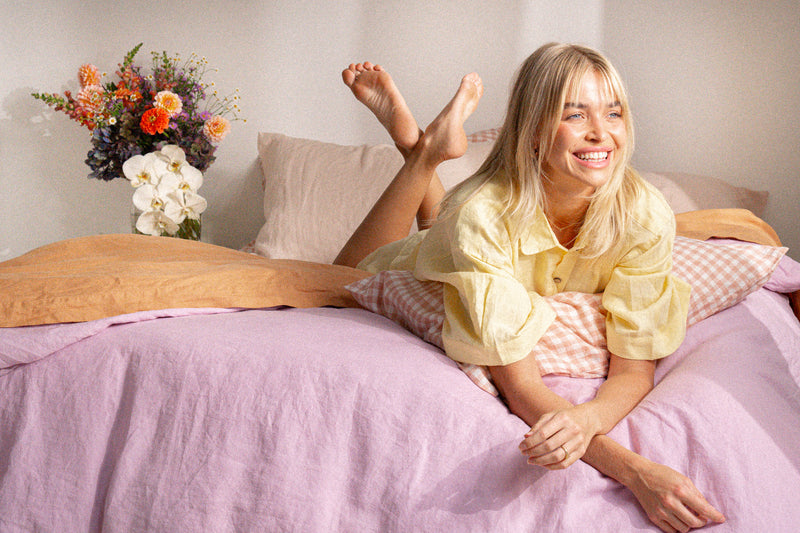
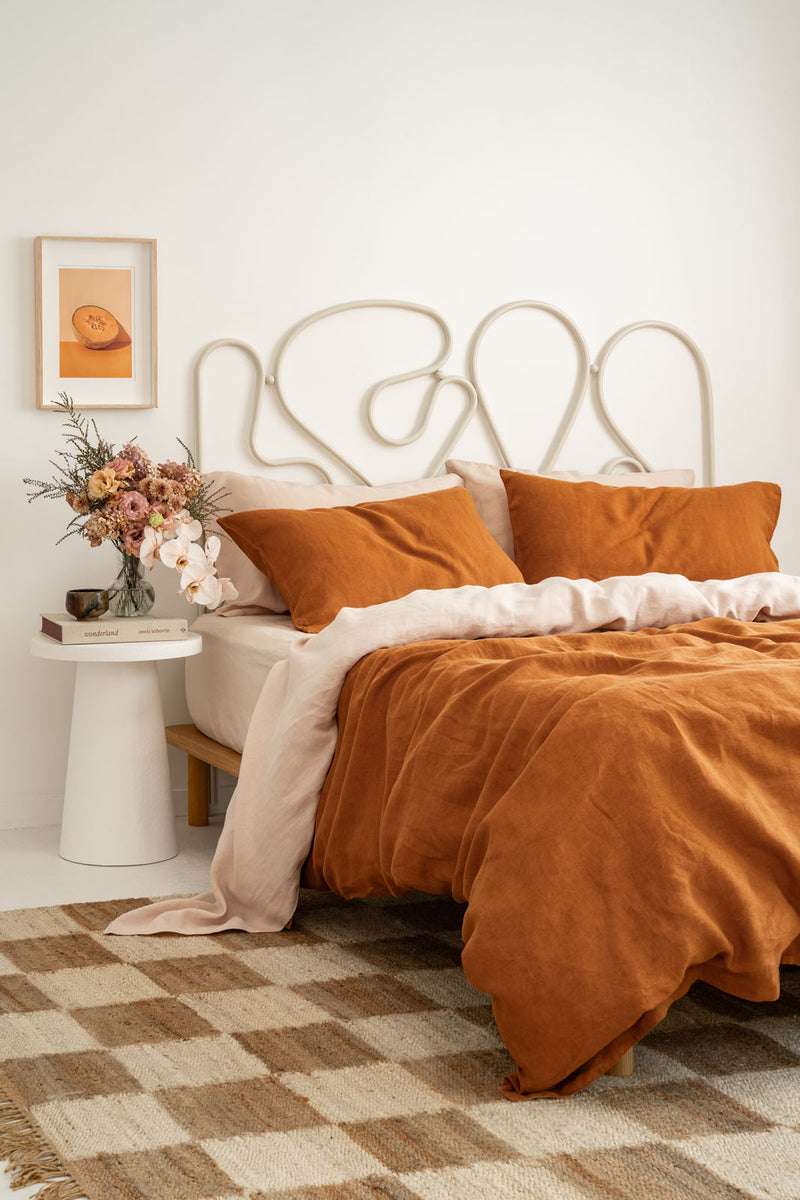
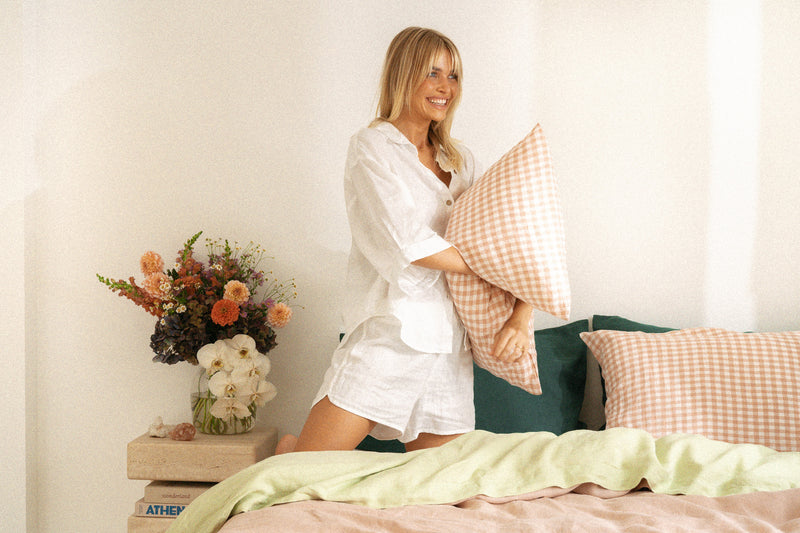
Practical Applications: Using Colour to Influence Mood
Now that you are set up with all the knowledge you need about how colour affects mood, it’s time to incorporate these tips into your daily life. While it can be tempting to go crazy painting walls or retiling the bathroom, our top tip is to move slowly, considering the psychological and emotional implications of your current set-up and any additional new pieces. Now that you know the answer to the question “How can colour affect your mood?”, you are invited to make more informed decisions about the colours you surround yourself with.
The colours you choose to wear or decorate your home with aren’t simply aesthetic choices but purposeful decisions to use colour to affect mood and emotion.

Whether you make conscious art purchases, noting how colour affects mood in art, or you bring emerging colours to workout or work spaces and calm hues into areas of relaxation — whichever choices you decide to make, you can start your journey towards fostering environments that positively influence your mood and wellbeing.
To wrap this up, the spectrum of colours does so much more than simply decorating our world; it instead shapes our emotions and affects our moods. The hues we surround ourselves with can help to energise us, calm us down or brighten our days. As you take the time to explore the world of colour, we recommend finding hues that resonate with you, boost your mood and enrich your lifestyle.
